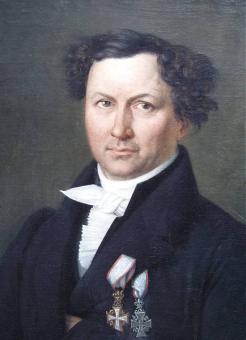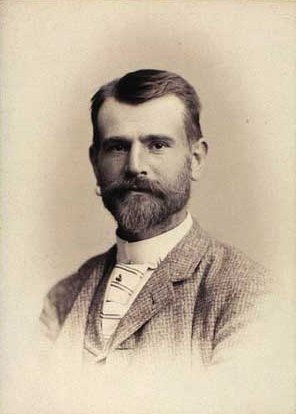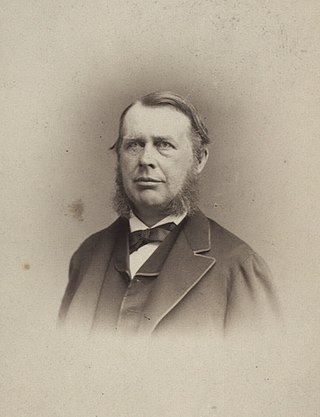Frederik Christian Moltke (20 August 1854 - 23 October 1936) was a Danish politician and landowner.
Contents
- Early life and education
- Property
- Politics and public offices
- Personal life and legacy
- Honours
- References
- External links

Frederik Christian Moltke (20 August 1854 - 23 October 1936) was a Danish politician and landowner.

Moltke was born on 20 August 1854 at Turebyholm, the eldest son of chamberlain Frederik Georg Julius Moltke (1825–75) and Caroline van der Maase (1827-1886). He graduated from Herlufsholm School in 1873 and then studied at the Royal Agricultural College before going on a longer journey abroad. [1]
Moltke inherited the family's estates after his father's death in 1875 and took over the management of them in 1879. He Owned Bregentved, Turebyholm and Sofiedal. He completed a number of large construction projects on his estates in 1887-91 and supported agricultural development by making land available to a number of agricultural experiments. [2]
His city home in Copenhagen was Moltke's Mansion in Frederiksstaden.
Moltke was in 1880-1921 chairman of the Parish CCouncil in Haslecv and in 1885-1920 president of the Agricultural Society (landboforening) in Præstø County. He was later elected for the governing bodies of several national organisations. He was president of the Danish Fishermen's Association (Dansk fiskeriforening)in 1887-1902, president of De Samvirkende Landboforeninger i Sjællands stift in 1910-24 and president of the Royal Danish Agricultural Society in 1911-30.
Moltke was in 1894-1910 a member of Landstinget as a representative of the 3rd Constituency. He was associated with the Højre party.
Moltke married Magdalene (Magda) Regitze Anna Emilie Estrup (8 November 1858 - 21 July 1928), a daughter of J. B. S. Estrup (1825-1913) and Regitze C. C. A. Holsten-Charisius (1831–96), on 2 June 1881 in the Citadel Church in Copenhagen. The couple had no children.
Moltke died at Bregentved on 23 October 1936 and is buried at Freerslev Church. He endowed the family's estates to Moltke's nephew, Christian Moltke (1895-1968).
Moltke was created a Knight in the Order of the Dannebrog in 1885, a 2nd-order Commander of ht eOrder of the Dannebrog in 1913 and a 1st-order Commander in the Order of the Dannebrog in 1019. He was awarded the Order of Merit in 1892 and the Grand Cross in 1925.

Jacob Brønnum Scavenius Estrup,, was a Danish politician, member of the Højre party. He was Interior Minister from 1865 to 1869 in the Cabinet of Frijs and Council President as well as Finance Minister from 1875 to 1894 as the leader of the Estrup Cabinet. At 23 years, he was the longest sitting Danish minister ever.

Count Adam Gottlob von Moltke was a German-born Danish courtier, statesman and diplomat, and Favourite of Frederick V of Denmark. Moltke was born at Riesenhof in Mecklenburg. His son, Joachim Godske Moltke, and his grandson, Adam Wilhelm Moltke, later served as Prime Minister of Denmark.

Caspar Frederik (Friedrich) Harsdorff, also known as C.F. Harsdorff, was a Danish neoclassical architect considered to have been the leading Danish architect in the late 18th century.

Otto Joachim Moltke was a lawyer and government official. He was the Minister of State of Denmark from 1824 to 1842.

Ferdinand Meldahl was a Danish architect best known for the reconstruction of Frederiksborg Castle after the fire in 1859. Meldahl was one of the leading proponents of historicism in Denmark.

Jacob Peter Mynster was a Danish theologian and clergy member of the Church of Denmark. He served as Bishop of the Diocese of Zealand from 1834 until his death.

Otto Christian Hammer was a Danish naval officer who participated in the First Schleswig War and the Second Schleswig War.

Jørgen Hansen Koch was a Neoclassical Danish architect. He was chief of the national Danish building administration from 1835 and director of the Royal Danish Academy of Fine Arts from 1844 to 1849.

Bregentved is a manor house located 3 km east of Haslev on the Danish island of Zealand. It has been owned by the Moltke family since the middle of the 18th century.

Emil Axel Berg was a Danish architect. He received the Neuhausen Prize, C. F. Hansen Medal, and Eckersberg Medal, and was honored as a Knight of Order of the Dannebrog.

Vilhelm Frederik Treschow (15 September 1786 – 2 April 1869 was a Danish supreme court attorney, politician, landowner and philanthropist. He founded Treschows Stiftelse in Copenhagen.

Christian Hasselbalch was a Danish industrialist and merchant. He founded Hasselbalch & Co.

Johan Cornelius Tuxen was a Danish naval officer, politician, editor and writer. He was a member of the Folketing from 1864 to 1879.

Turebyholm is a manor house in Faxe Municipality, some fifty kilometres southwest of Copenhagen, Denmark. It was acquired by Adam Gottlob Moltke in 1746 and has remained in the hands of the Moltke family to the present day. It was part of the Countship of Bregentved from 1756 to 1920 and still shares its ownership with the Bregentved estate. The current Rococo-style main building was constructed by royal architect Niels Eigtved in 1750. It was listed on the Danish registry of protected buildings and places in 1918.
Tryggevælde is a manor house and estate in Faxe Municipality, some fifty kilometres southwest of Copenhagen, Denmark. The estate was a royal fief until the middle of the 18th century and was later owned by the Moltke family at Bregentved from 1751 to 1937. The current main building is from 1849. The Tryggevælde Runestone was from some time during the 16th century to 1810 located in the central courtyard of the old main building.
Mørup is a manor house and estate located close to Sorø, Denmark. It is now owned by Sorø Academy The half-timbered main building dates from the beginning of the 19th century.

Frederik Georg Julius Moltke, Count of Bregentved, was a Danish landowner and politician.

Johan Ludvig Ammentorp was a Danish medical doctor. He served as Chief Physician of the Medical Corps (stabslæge) from 1911 and as Physician General (generallæge) from 1916 to 1930.

Frederik Riise was a Danish photographer and exhibition curator. He was a noted portrait photographer and is also remembered for his numerous photographs of buildings, streets and monuments in Copenhagen.
Rikard Magnussen was a Danish sculptor.